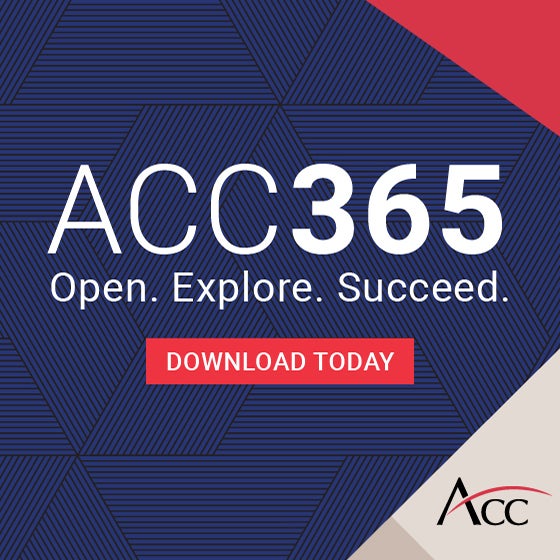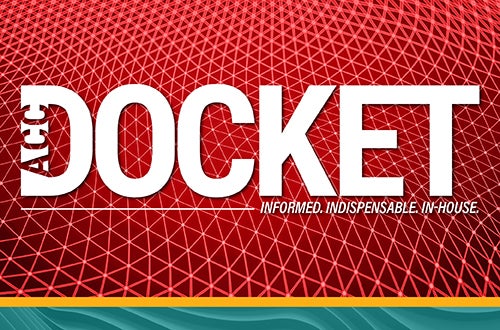Winning the global war for talent is critical for businesses seeking to implement a platform of innovation and excellence. But with recent restrictions to Australia’s employer sponsored immigration program, what options are available for businesses seeking to access global talent? ACC’s Victorian Partner, Hammond Taylor, investigate what in-house counsel need to know about the relaunched Global Talent Scheme and how it can assist organisations’ to fulfil their skill needs.
What is the Global Talent Scheme?
The Global Talent Scheme (GTS) is a migration program that launched in July 2018 under the Temporary Skill Short 482 Visa program. The purpose of the scheme is to promote access to the Australian labour market for ‘highly skilled individuals’ who do not meet the requirements for the Subclass 482 visa or other programs.
After a year-long pilot, the first version of the scheme was superseded by a “new and improved” and now permanent version. The program now has two arms: the Global Talent Employer Sponsored (GTES) and the Global Talent Independent Program (GTIP).
Global Talent Employer Sponsored Program
The GTES is seemingly the same as its pilot sibling, retaining the same features with minor amendments to the general requirements and the promise of improved processing times and industry consultation. The Department of Home Affairs has stated that “the GTES is only for highly-skilled niche occupations that cannot be accessed through existing skilled programs”.
One of the main benefits of the program is the absence of a skilled occupation list, which means that employers have increased flexibility in finding the ‘right talent’. That is, employees do not need to slot themselves into a role listed in the designated skills shortage list.
One additional benefit of the program, is the ability access a pathway to permanent residency with requirements such as the maximum age of the applicant able to be negotiated with the Department. Like the GTS, the GTES is divided into two streams (Established Business and Start-up), each with varying requirements. Under the Established Business category, businesses must be accredited sponsors with the Department with annual turnover of $4 Million, and the salary threshold has been reduced to $148,700. The salary threshold has remained at $80,000 under the Start-up category, and Start-ups must be operating in the Science, Technology, Engineering or Mathematics sectors. Further, start-ups must have received an investment of $50,000 from a registered investment fund or an Accelerating Commercialisation Grant, and be approved by an additional independent bureaucratic body, the GTES start-up advisory panel.
Global Talent Independent Program
Under the GTIP, the Department of Home Affairs is sending ‘Global Talent Officers’ (GTO) to Berlin, Dubai, Santiago, Shanghai and Washington DC to scout out highly talented individuals for permanent migration to Australia. Individuals may access the GTIP via a GTO and must also receive a nomination from an ‘organisation with a national reputation’ in their field such as the peak body or Industry growth centre. Access to the program and subsequent referral to apply for a Distinguished Talent Visa is by invitation only. Employer sponsorship is consequently not needed for this visa stream.
What counts as ‘distinguished talent’? The Distinguished Talent Visa was previously the highest skilled visa in the Australian system, capped at 150-200 places each year. The regulations require that an individual applying for this visa has an ‘internationally recognised record of exceptional and outstanding achievement in [either]…a profession…a sport…the arts…[or ] academic and research’. The individual must still be ‘prominent in [their] area’, ‘be an asset to the Australian community’ and ‘have no difficulty in obtaining employment or in becoming established independently’.
Further, if the applicant is over the age of 55 years, they must show that they would be of ‘exceptional benefit’ to Australia, which is based upon a variety of factors.
Under the GTIP, the DHA is planning to scout up to 5000 talented individuals from overseas who will be ‘fast-tracked’ to Australia.
Has the scheme been successful?
The GTES scheme has received mixed reviews. Some parties involved, such as large tech-based companies, welcome it as another avenue to bring highly skilled individuals to their businesses where the high cost is not viewed as being overly prohibitive. Conversely, it is viewed by many in the immigration industry as failing to resolve pre-existing problems and a large step backwards from the Subclass 457 Visa.
According to Atlassian co-founder Mike Cannon-Brookes, the abolition of the 457 visa was criticised at the time as having “damaged Australia’s reputation in the largest industry in the world”. This observation does not stray far from the truth. The abolition of this subclass has seen a major adverse impact on the importation and retention of overseas talent as companies now have to undergo further bureaucratic processes.
A major concern, in relation to the Subclass 457 Visa (and ultimate motivation for its abolition), was that it was being used to bring in cheap foreign labour resulting in widespread exploitation of workers. While these concerns could likely have been met with minor amendments to the regulations or increased scrutiny and compliance mechanisms, the Coalition chose to scrap the visa class altogether and replace it with the Subclass 482 Visa. Unlike the 457 visa, the 482 visa no longer ‘covers the field’ with a 25% reduction in the skilled occupation lists and the removal of access to PR pathways for many business focused positions.
The relatively restrictive criteria for businesses to meet in order to use the alternative GTES program, such as the turnover requirement for the Established business stream and the designated investment requirement for the Start-Up stream, have meant that many businesses are precluded from using the program.
These factors along with lengthy processing times meant that the GTS had only 70 approved applicants, representing 0.085% of visas granted, in July 2018 - 2019. In comparison, over 80,000 applications were received for 482 visas during the same time period. The GTES, while implemented as a revision to the GTS, has many of the same issues and therefore is almost equally unattractive to prospective businesses and applicants.
The GTES pathway may involve significant costs for a business with nomination and visa fees, as well as the Skilling Australians Fund Levy payable for each application. Businesses are also required to meet relatively high pay requirements for workers as well as other costs such as migration agent or legal fees.
Ultimately, the lack of these pathways contributes to Australia becoming a less attractive destination for those individuals who are necessary to the continued growth and development of important industries in this country in the post mining boom era, such as Information Technology.
What should I consider when applying for GTES?
- Is there another visa pathway available to you?
The various labour agreement programs available, including the GTES, may be best considered as a pyramid from least to most complex visa pathways. Sponsors ought first to attempt to meet their labour needs at the lowest level of the pyramid with existing visa streams or a labour agreement before considering the GTES or other more costly and complex programs.
- Do I have the time and resources to apply for this program?
Under the GTS pilot, applications took months to process despite having very few applications in its 12 months of existence. Although the DHA has said that application turn around will be faster under the revised scheme, it is important to keep in mind that applicants are required to provide an array of documents and substantiating information. Acquiring these documents may come with lengthy processing times, and requests for further information by the Department may extend this.
- Should I think about engaging a migration lawyer?
As this process is complicated it may be necessary to engage an immigration lawyer to determine if this program is indeed a relevant option for businesses and visa applicants.
This article has been written by Sioné Pemberton, Hammond Taylor, ACC Australia’s Victorian Partner.

